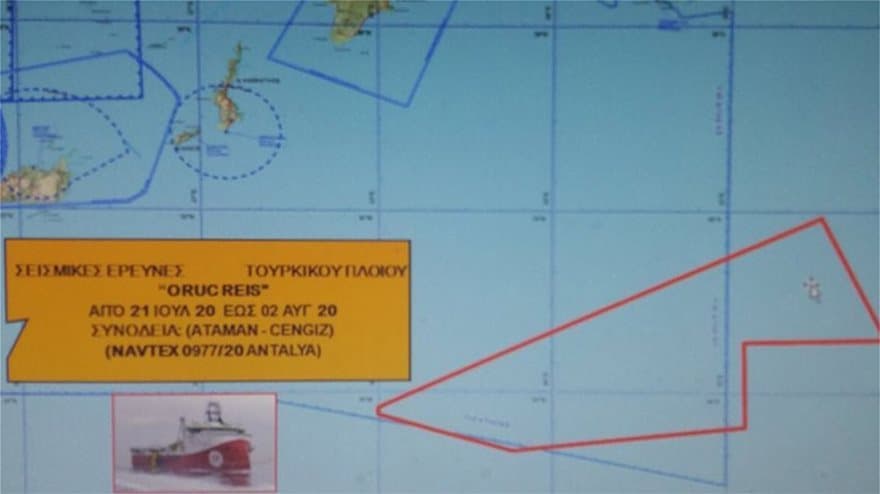
The gradual withdrawal of Turkish forces from the wider area of the southeastern Aegean continues as a number of Turkish warships have returned to the ports of Aksaz and Smyrni (Σμύρνη, Turkish: İzmir) while a number have crossed the straits.
The Greek Navy remains on standby as Turkey’s NAVTEX lasts until August 2, and although it seems that the great tension is subsiding, no one knows if the Oruç Reis research and drilling ship will sail from Attaleia (Ἀττάλεια, Turkish: Antalya) by next Sunday to start seismic surveys.
Even in such a case, however, it is considered possible to avoid the area of the Greek continental shelf and sail to other areas.
See the map with the area occupied by the Turks (in red box) in which most of it is located in the Greek Exclusive Economic Zone which is depicted in blue box.
The rapid development of Greece’s Navy units seems to have been of great importance for the development of the crisis, since within 24 hours from Turkey’s issue of NAVTEX, the entire fleet had sailed from their naval bases and there was a mood of deterrence.
However, Turkish President Recep Tayyip Erdoğan on Saturday, made statements in the same way in reference to Iraq, Syria, Libya (three areas in which Ankara is militarily involved) with the Aegean.
“From Iraq to Syria, from Libya to the Aegean, where there is a threat against our country we went, we showed our strength and determination without hesitation” said the Turkish President, glossing over the fact that Turkey initiated tensions with Greece and quickly withdrew when the Greek Navy arrived.

